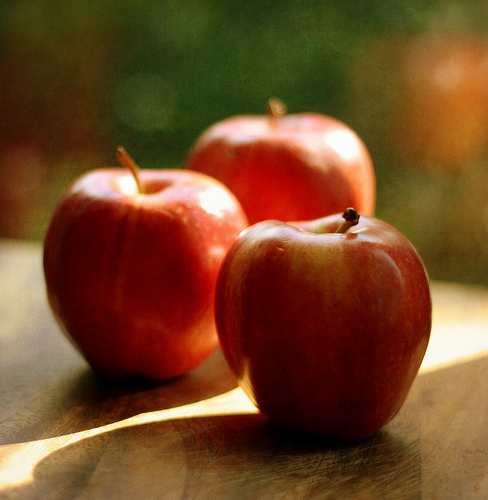An Apple A Day
From the glorious sunshine to the moist rain sodden air to the earthy smell that envelops us, it is safe to say that spring has sprung. Spring conjures up feelings of excitement; promising sun filled days, lighter less sluggish bodies and great local seasonal food! As much as I love the heavy root vegetables, stews, meats and soups that comprise many winter menus, it is the local fresh fruit and vegetables that allow for exciting menu options both at home and on patient meal trays. The plethora of crops that is about to descend upon us is limitless and can allows you to include seasonal delights on your menu to provide your patients with new menu options, which freshens and revitalizes your menu and can lead to an increase in patient satisfaction.
Over the past 10 years there has been a steady and unrelenting increase in the awareness, demand and volume of local and/or organically sourced food which has taken a strong foothold to become a wide spread movement rather than a fleeting trend. While this movement has been alive and active in the general public, it is more recently starting to make its way into the healthcare sector and there are simple changes that you can make to participate in this growing food movement.
I am going to be focusing this first menu change on apples. You are right in thinking that it is strange to start a conversation about spring menus with apples, a fall crop, but apples have staying power on your menu that makes this small change worthwhile and can provide a year round item that punctuates your menu with freshness and the local options that people are now looking for. Because of the humble apple’s wide popularity, most hospital menus have either fresh whole or sliced apples on the menu and many of these apples make a long journey from far beyond the reaches of North American borders. Many of the apples on hospital menus are making the trip from South America and South Africa; but this import heavy food system takes a toll on patient satisfaction (food is less fresh or sometimes even arrives under ripe) and the environment (on average imported food travels 45 times farther than its locally sourced counterpart [1] ). Simple switches to fresh local food can have a great impact on patient satisfaction, which is the goal for all of us involved in the hospital food system.
Many of the large broad-line distributors are beginning to increase the amount of local food on their product lists as the demand from hospitals and the broader public sector increase and as the supply from farmers begins to meet this demand. Have a conversation with your distributor(s) and ask them what local apple varieties they carry; versatile well-loved apples varieties in hospitals are the gala or empire (macs are also widely available but can be slightly more tart than the other two options). If your distributor is not currently stocking any local apples, ask them if this is something that they could consider and let them know that you would be happy to purchase locally procured foods when they are made available to you. There are also many smaller distribution companies that are focusing exclusively on local foods across Canada and North America. These companies are a great resource for understanding the seasonal availability of your products, where the product is coming from (right down to the farm level) and providing lead time as to when they product will need to be switched to imported (you will likely need to rely on imported apples for about one month in the late summer once you have made your switch to local apples!).
If you are looking for new and innovative ways to stay in line with leading food trends and increase or maintain your patient satisfaction, sourcing food for patients locally is a great way to start.
[1] Xuereb, Marc. 2005. Food Miles: Environmental Implications to Food Imports to Waterloo Region. Region of Waterloo Public Health.
Retrieved from http://chd.region.waterloo.on.ca/en/researchResourcesPublications/resources/FoodMiles_Report.pdf
Photo Credit: mbgrigby via Compfight cc










